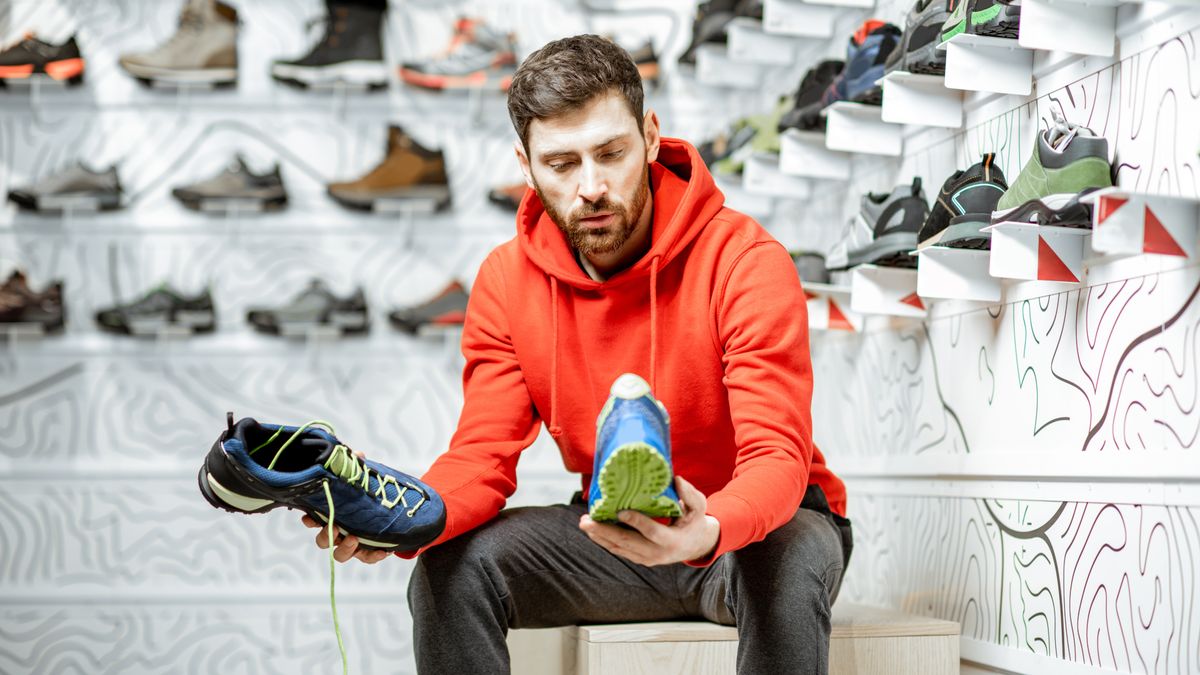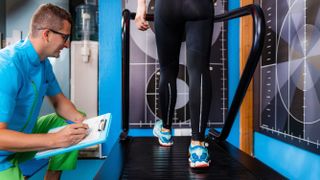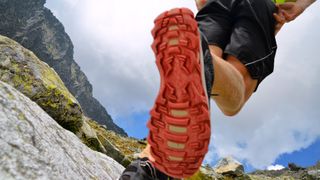Whether you’re just starting out running for the first time or looking for a running shoe that’s better suited for long Sunday marathons, making sure you get the right type of shoe for your feet is arguably the most important investment you’ll make.
This way you’ll make sure you’ve got a shoe (or shoes) that best suits your running style, the type of running you plan to do there, and most importantly, you’re getting something that makes that weather sure. your feet as comfortable and pleasant as possible.
While your first train of thought might be to reach for the most expensive shoe in the running shoe store or filter by most expensive on the first online retailer you come across, arm yourself with this knowledge to ensure to really choose the best running shoe for you.
1. Think about how you run
This is perhaps the most important information you can have to get a running shoe that is right for you. Don’t just spend big and buy a pair of Nike Vaporflys or Alphaflys just because all the elite runners who crush the PBs in them. We all run differently and understanding a little more about how you run can better inform the shoe you should lace up.
What we’re primarily talking about here is your running gait. Simply put, it refers to how your feet move when you run. This gait breaks down into three main types of what is called pronation. This refers to how your foot rolls inward when it lands on the ground. There is neutral (or normal) pronation, underpronation, and overpronation.
With this better understanding of the degree of pronation that occurs when you run, you can better identify the type of shoe that provides the best type of support for that running gait.
To save you from digging into this gait data yourself, the easiest thing to do is to go to a running store and do this running gait analysis, usually for free, to learn more on your running style and then better understand what type of shoe to look for.
2. Know the main types of running shoes
By doing the above, you can start to get a better idea of how the types of running shoes are classified. You might see a shoe called a support or stability shoe, or have minimal or maximum cushioning. There are two main types of running shoes to master.
A stability or support shoe is one of them and it is the type that is designed for someone who is over-pronating in their running gait. It uses design elements and shoe structure to help reduce this pronation and excessive movement in the foot and ankle areas to combat the tendency to overpronate.
Neutral running shoes are the other key shoe type. These tend to be lighter than stability shoes because they don’t need to offer those extra support elements. They generally offer more heel cushioning to cater for that more neutral running gait as well.
3. Get the right fit
It sounds obvious but you want this shoe to fit snugly, but there are ways to make sure you pick something that will give you a fit that works well on your runs and provides the right level of support and comfort.
So just because you’re a size 8 in an everyday trainer doesn’t always mean you’re necessarily a perfect size 8 in a running shoe. Especially since running shoes of the same size may differ from brand to brand.
If you walk into a store, you may need to weigh a size down or up as well. You’ll want something that offers a bit of room in the toe or forefoot area, about the width of a thumb. Indeed, while you run, your toes move apart and can also cause them to swell. So it’s important to have that bit of space to spread out, so things don’t get cramped and uncomfortable.
It’s also important to have a well-fitting midsole (the central part of your shoe). Some shoe brands (not all) offer standard and wide fit shoes, so keep an eye out for them when visiting a store or browsing online.
If you’re going shopping in person, it’s worth putting on the socks you usually run or hope to run in. Whether thick or thin socks will invariably influence fit and comfort and could be a factor in the choice. for one shoe rather than another.
4. Consider the surfaces you will be running on
You might plan to spend most of your running time on sidewalks, roads, or on a treadmill in the gym. Or you like the idea of running off-road and going to higher ground, so you may be looking for a shoe that is better suited to the more difficult and unpredictable surfaces.
If you’re going to trade sidewalks for wooded areas and rocky paths, grab a trail shoe rather than a road one. A dedicated trail shoe will offer more protection in key areas of the foot like the heel, toes and top of the foot to better protect against trail debris.
The size of the pods is also important here. These are found on the bottom of the shoe and are present to improve grip on different surfaces. Opt for shorter lugs for harder and longer off-road terrain if you plan to tackle muddier routes regularly.
If you plan to do a mix of road and trail running, you can also look for shoes that allow you to go from flatter terrain to something more challenging. A good road-to-track shoe offers a mix in terms of overall weight and outsole type and lug pattern/size to ensure that you can effortlessly make that transition between the two different surfaces while still enjoying a good protection and good comfort.
5. Think about how long you are going to run
It’s less about the total mileage you hope to rack up in the shoes over their lifetime and more about the distances you expect to regularly run in them. Are these shoes you just want for a gentle walk in the park or something you’re going to use when you need to do a slow, steady two hour run or is it for race day?
One of the shoe elements to pay special attention to here is cushioning. The level of cushioning can determine how well equipped this running shoe is to absorb the impact of your foot hitting the ground as you run.
For example, opting for heavily cushioned shoes means reducing this impact and you can opt for a more cushioned shoe to run longer distances. There are also shoes that offer minimal cushioning, with these minimalist shoes offering a much lower-to-the-ground feel as you run.
Many shoes fall between these two categories to offer the best of both worlds in terms of cushioning to absorb shock, but also to give you something light and comfortable enough to run at different speeds and which can also work well for races over longer distances. Those shoes with smaller amounts of cushioning may mean sacrificing things like durability, but looking at that level of cushioning as well as the density and what the cushioning material is paired with are things to pay attention to. particular.



